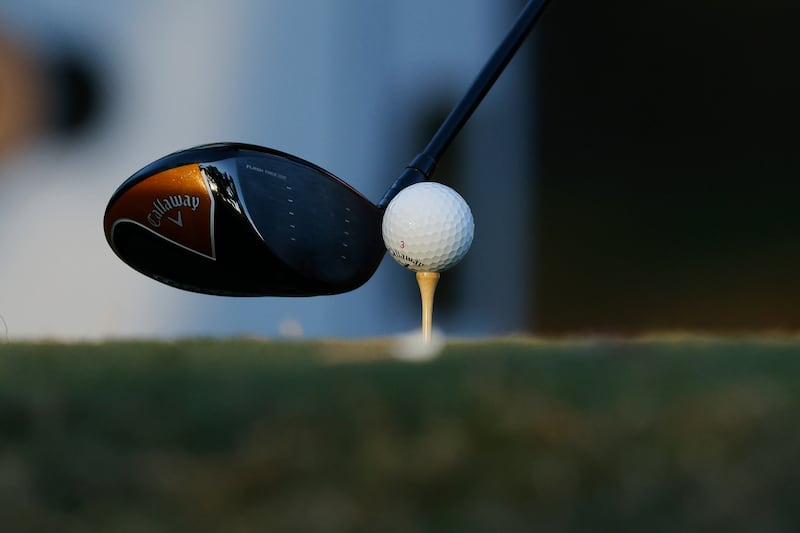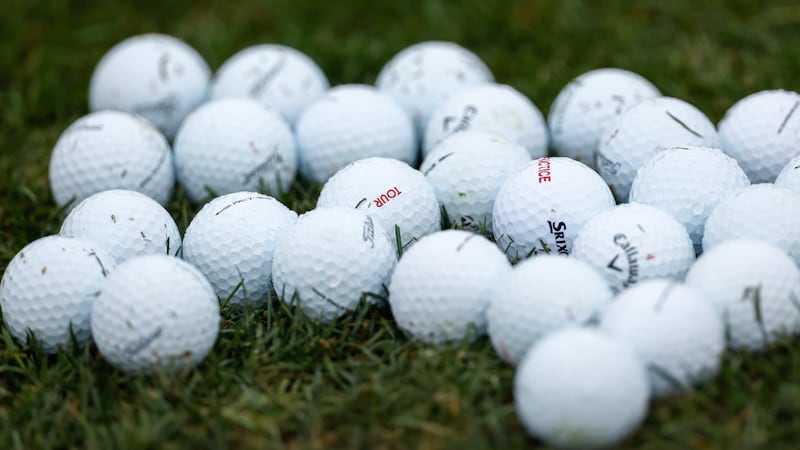What’s this about ‘rolling back the golf ball,’ is it true or just spin?
Within the next week the R&A (Royal & Ancient) and the USGA, the custodians of law and order in the sport across many areas including rules and equipment, are expected to announce measures that will reduce the distance golf balls travel. It is the end result of three years of consultation between equipment manufacturers and golf industry stakeholders to try to future-proof the sport. The news has leaked like a poorly struck seven iron.
Is it right across the golfing spectrum?
Yes, albeit with a different focus. It relates more to the spectacle in professional golf, one that is miles away from the average club golfer in terms of a comparable, arguably more so than at any other time in the history of the sport. The principal beneficiaries from an Irish perspective are likely to be golf clubs previously challenged by land constraints as they tried to preserve the integrity of the original designs. New tees, trees, bunkering and greens have been significant costs incurred in the war against distance.
READ MORE
That’s not going to appeal to the ‘grip and rip it’ golfer for whom prodigious distance is worn as a badge of honour, the types that wait for the green to clear on a par four?
No, but there is a sizeable discrepancy between how far many amateurs think they hit the golf ball and actual distances. The average driving distance for a male golfer with a six handicap according to the latest USGA/R&A joint report is just under 240 yards, six to 12 handicap is 220 yards, 13-20 handicap is 200 yards, while 21 handicap plus is 176 with the average across all categories at 215 yards. Ladies driving distances range from 196 yards (six handicap and lower) to 119 yards (29+ handicap with the average at 147 yards).

Speaking of figures, by how much are they looking to reduce the distance the golf ball flies?
The guesstimate is about 15 yards for a pro and 11 for an amateur.
How?
Well you asked for this. The Overall Distance Standard would increase the swing speed at which golf balls are tested from the current standard of 120mph to 127mph. While increasing the swing speed, the test would not change the distance limit of 317 yards.
Come again?
Golf Digest offered the best layman’s explanation: “In simple terms, if a golf ball is currently close to the Overall Distance Standard, as a high majority of golf balls used in elite competition [and popular in the marketplace] are, then raising the speed by [even] 5mph would make them fly 15 yards farther, or well past the current distance limit. Balls would then have to be made to stay within that 317-yard standard.”
Wasn’t there a chat earlier in the year about the introduction of a Model Local Rule. What’s that when it’s at home?
Model Local Rules have existed previously to deal with the moderation of equipment advances. Two of the most famous involved the driver and wedges. The first was to deal with the spring effect on drivers, the coefficient of restitution was the snappy hook/name they gave to it. They introduced it as a local rule where you couldn’t use those drivers in elite professional competition. Recreational amateur players were still using them. Then over time it became part of the equipment rules as opposed to a local rule.
They did the same thing with groove geometry in wedges. The old square groove wedges were faded out in the same way, first by means of a local rule that precluded certain nonconforming wedges. But now it seems that the golfing authorities might instead go down the bifurcation route rather than allowing amateurs to keep playing with the existing balls.

What’s this bifurcation, sounds like something that the Catholic Church would have preached against from the pulpit in 1950s Ireland?
It means that instead of the roll back in distance terms just applying to the professional golfers, it will apply to all.
Is everyone in agreement?
Nope.
All in favour ...
Tiger Woods said: “I’ve always been for bifurcation,” referring to the concept of two different sets of rules for pro and amateur golfers. Rory McIlroy concurred: “‘I don’t understand the anger about the golf ball rollback. It will make no difference whatsoever to the average golfer and puts golf back on a path of sustainability. Bifurcation was the logical answer for everyone, but yet again in this game, money talks.”
Those against?
Padraig Harrington petitioned for no bifurcation in a typically thoughtful and well-made argument. Bryson DeChambeau sat on the fence. “I think it’s the most atrocious thing that you could possibly do to the game of golf. It’s not about rolling golf balls back; it’s about making golf courses more difficult. I think it’s the most unimaginative, uninspiring, game-cutting thing you could do. Everybody wants to see people hit it farther. That’s part of the reason why a lot of people like what I do.”
So, what am I going to do with my eight boxes of ProV1Xs and three sleeves of Commandos if they are deemed nonconforming?
The answer is nothing in the short term. The suggestion is that the golf ball rollback will be introduced for pros in 2028 while it’ll be 2030 before it will be applicable to amateur golfers. The stash will be long gone.
- Find The Irish Times on WhatsApp and stay up to date















